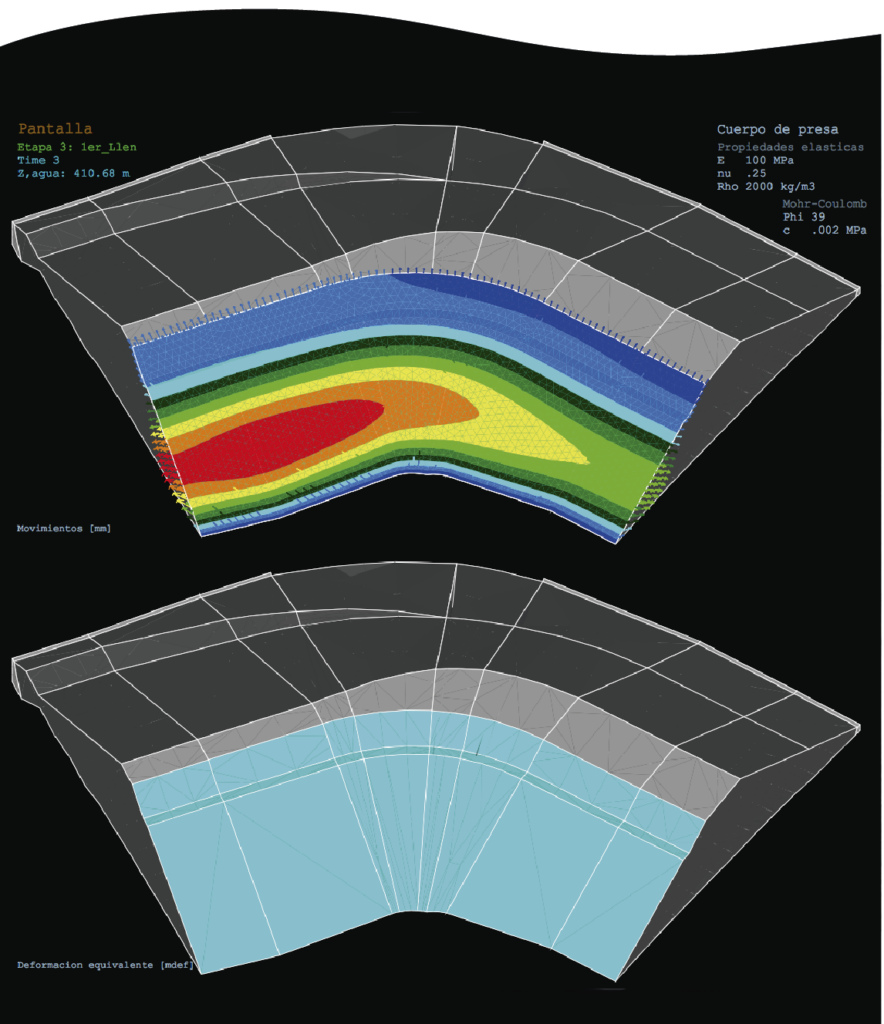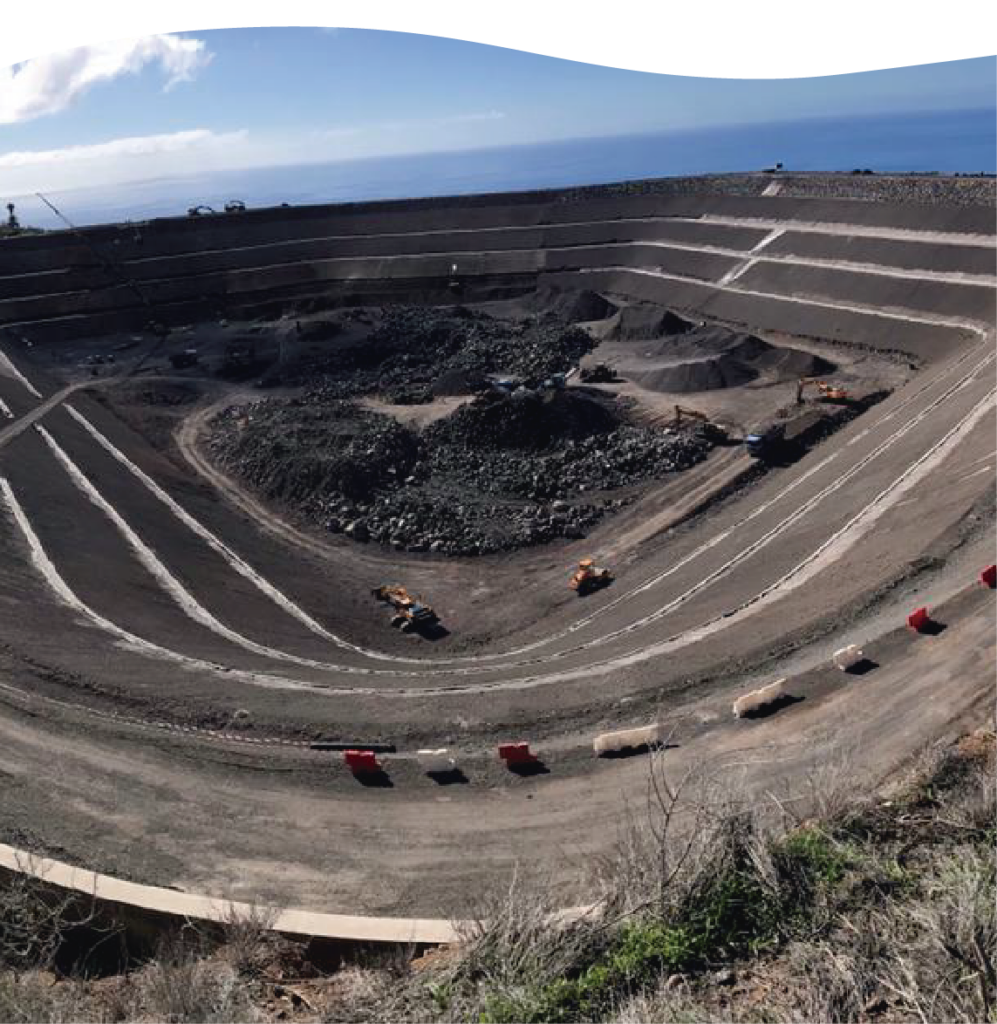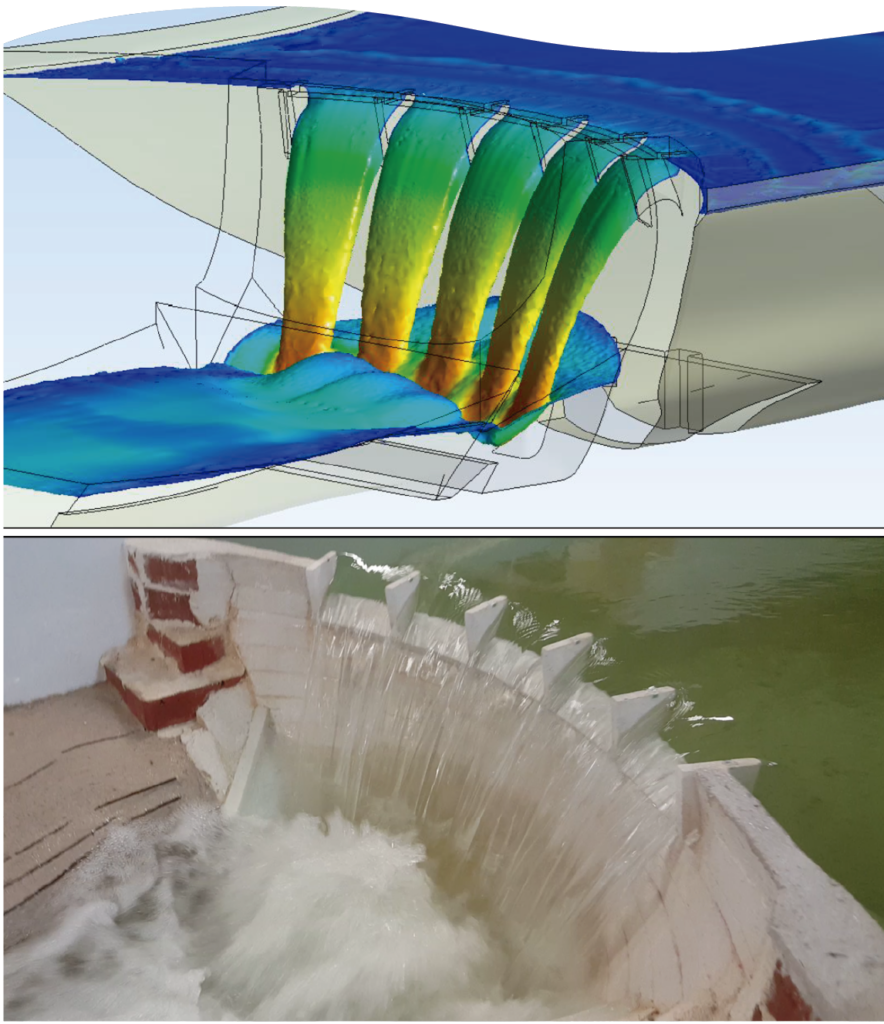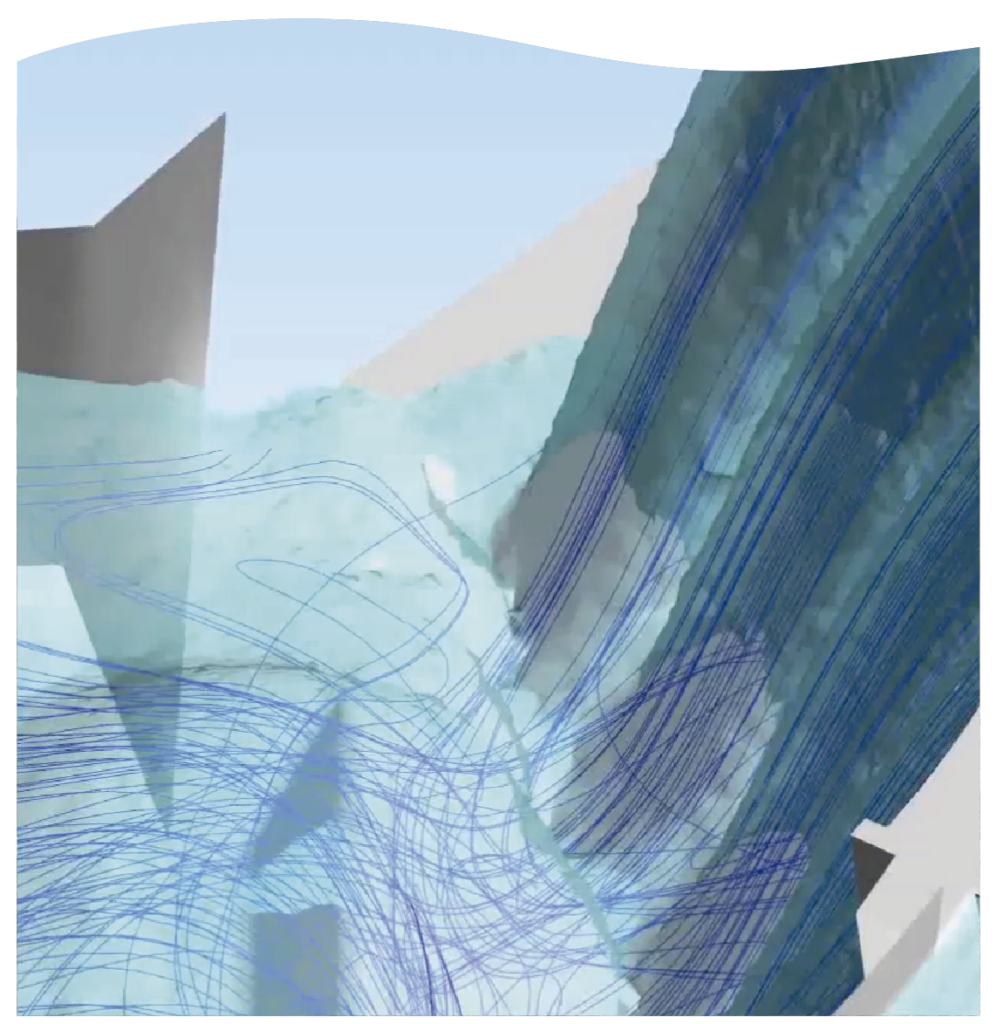
Numerical modeling actions

Technical assistance for non-linear calculations using finite elements in the El Vicario reservoir in La Palma, the Canary Islands.
Tragsa
The challenge
The El Vicario reservoir, located in the municipality of Tijarafe, on the island of La Palma, with a capacity of 1.45 hm³ and a maximum height of 57 m at the foot of the external wall, will be connected to the Garafía-Tijarafe channel to increase its filling capacity and generate a source of quality water for the agricultural sector of the Aridane Valley. Once the work was completed, the intention was to fill the reservoir in two phases.
Our goal with this action was to evaluate the compatibility of the movements expected to be carried out on the structure with the possibility of filling it continuously in a single phase.


What did we do?
We developed various scenarios for the non-linear analysis of the reservoir in collaboration with engineers who are experts in numerical models from the Polytechnic University of Madrid (UPM).
We focused the analysis on two fundamental points:
- The deformation of the membrane that may affect the PVC screen due to the movements of the embankment and its compatibility with its range of motion.
- The state of stress and safety due to the sliding of the downstream supporting walls in certain areas of the reservoir.
In addition, we made several models of finite, non-linear and evolutionary elements to reach a situation of stability in the movements of the structure: we created a partial 3D model of the structure in its central zone with the ANSYS software and a 2D detailed model of the support zone of the dam on the downstream wall with the FLAC3D software.
Technical assistance for the hydraulic modeling of the Cueva de la Mora dam, Huelva.
UTE RIEGOSUR-ACCIONA / Regional Government of Andalusia
The challenge
The Cueva de la Mora dam, a 34 m high arch dam, was built in 1971 and has been in disuse since the 1980s until, in 2015, the Regional Government of Andalusia took action to rehabilitate and refurbish it.
The main objectives of the hydraulic modeling of the Cueva de la Mora dam spillway were the hydraulic verification of the projected spillway, the determination of the capacity curve, the study of possible erosion in the downstream river basin and proposals for possible improvements to its design.


What did we do?
In collaboration with the expert engineers in numerical models of Salete y Casino S.L. and the hydraulics laboratory of the School of Civil Engineers of the Polytechnic University of Madrid (UPM), a combined physical and numerical modeling of the dam spillway was carried out.
The comparison between the results provided by both models in a number of points has allowed the models created to be calibrated in order to take advantage of the benefits that come from using the numerical model in:
- Magnitude measurements, such as dynamic pressures or velocities at any point in the model.
- A “quick” validation/discarding of possible alternative approaches to improve the structure.
